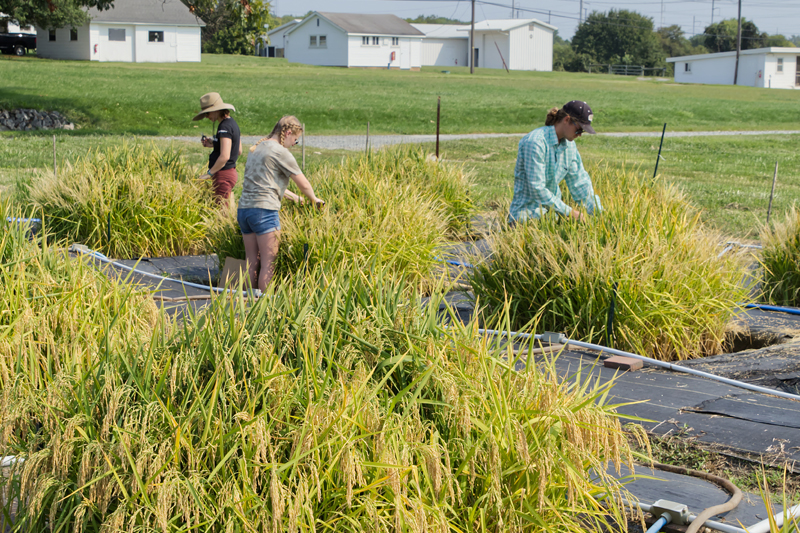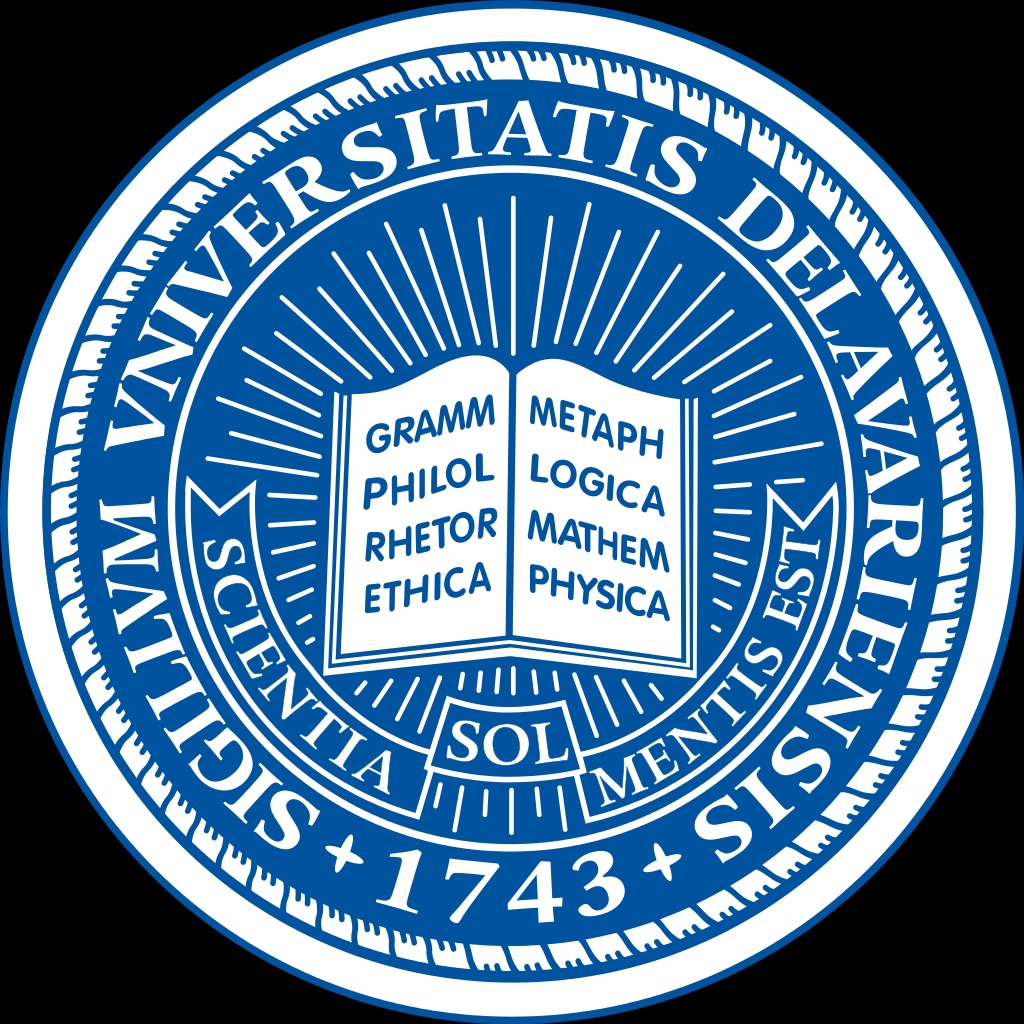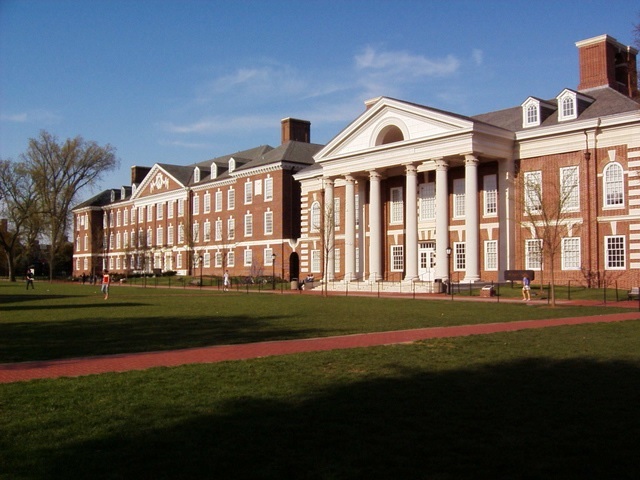From The University of Delaware
4.26.24
Nya Wynn
Photos by Monica Moriak and courtesy of Frank Linam

Students in the Seyfferth Lab, including doctoral student Frank Linam (right), harvest rice from the paddies grown on the UD Newark Farm.
Doctoral student Frank Linam explores how wet soil conditions in flooded rice paddies affect the way roots take in nutrients and filter out toxins.
More than 3 billion people around the world eat rice as a regular part of their diet — and this grain can hold its own. When submerged in flooded soils, many plants can’t breathe and are too stressed to grow, but rice can survive and even thrive.
Frank Linam, a plant and soil sciences doctoral student at the University of Delaware, is studying how the wet soil conditions in flooded rice paddies affect the way the roots take in nutrients and filter out toxins.
“The flooded soil in rice fields is really unique compared to other crops, which makes it a really fun area to study,” said Linam, who recently received the Donald and Joy Sparks Fellowship in Plant Science.
In wet soils, rice can survive in low oxygen environments by forming tube-like structures in its roots that allow the plant to bring oxygen to the roots. The introduction of oxygen into the flooded soil causes new minerals to form, most notably iron oxide minerals, creating an iron plaque layer.
“The iron plaque layer essentially acts as a filter for the plant, allowing nutrients to get in while stopping possible contaminants,” said Angelia Seyfferth, professor of biogeochemistry and plant-soil interactions and Linam’s advisor.
There is a caveat to this idea, though: Many researchers in the field speculated that since the iron plaque layer collects toxins, like arsenic, right next to the plant, it could potentially become a source of that toxin for the plant.
Seyfferth explained that arsenic is similar to some essential nutrients for rice. It can change its form in certain environments and can mimic phosphorus — a mineral that’s vital for plant growth.
“We were wondering, if while the plant is trying to access phosphorus that might be on that plaque layer, is it accidentally getting some arsenic?” Seyfferth said.
Linam found that the plaque successfully holds onto the arsenic in various environments and soil types so that it doesn’t make it into the roots.
“His work suggests that the plaque layer is actually a really good thing for preventing how much arsenic ultimately gets transported to the grain that we then eat, so it’s good news,” Seyfferth said.
Linam’s research on the kinds of toxins in rice and how much can invade just one grain will be key to understanding how much toxins can be introduced to the human diet through eating this food.
“I came to UD originally because Dr. Seyfferth’s research was so interesting,” Linam said. “The way that rice is able to take up the nutrients from the soil through its roots is really different. Something really interesting that we’re figuring out now is how different soil textures affect the oxygenation around the roots.”
Linam explained that as the oxygen is leaking out of the rice roots to form the plaque layer, the roots are taking in water, which brings new nutrients and toxins to the roots.
“We’re trying to figure out the relative rate of oxygen entering soil versus water entering the plant in different soil textures, and we study all that out in the rice paddies on the [UD Newark Farm] as well as the greenhouse and the lab,” Linam said.
The Seyfferth Lab specifically designed and built these experimental paddy rice plots for research and outreach. The real advantage to the fields, though, is that they’re so close in proximity to their lab, meaning they can easily gather lots of data over time.
Linam’s research has taken him far beyond their experimental rice paddies on the UD Newark Farm, leading him to conferences in Arkansas, Scotland and China.
At the the 15th International Conference on Biogeochemistry of Trace Elements in China, Linam presented his research through a prestigious U.S. Department of Agriculture predoctoral fellowship.
“It’s great to go there and see what people in more applied areas are doing,” Linam said. “Being able to travel to these different conferences and meet people from different countries is really cool.”
Seyfferth said sharing research is an integral part of being a scientist, especially in Linam’s discipline. Getting information out to growers and sharing data can make a huge impact in the ever-changing agriculture industry.
“One of the unique things about [Linam] and one of the talents of a successful scientist is having the ability to talk on a high level to other experts, but also translate that information to the common person so that they understand what you’re doing and why it’s important,” Seyfferth said.
After his doctoral studies, Linam plans on continuing his work with rice roots and their interactions with the soil through postdoctoral studies. He hopes to eventually work in academia long-term.
Some of the mechanisms Linam wants to further delve into are the ways that rice roots can exude different molecules that in turn make it easier for the roots to take in the essential nutrients that reside in the soil.
Once Linam’s research can reach extension agents and rice producers, real progress can be made in the cultivation and conservation of rice for the billions of people who eat the grain every day.
“One thing I want to keep doing in the future is looking at more specific mechanisms of how the roots interact with the soil,” Linam said. “No one knows a lot about things happening below ground, so being able to look at differences across genotypes or species and how their roots grow can increase our efficiency of plant production and conservation.”
See the full article here .
Comments are invited and will be appreciated, especially if the reader finds any errors which I can correct.
five-ways-keep-your-child-safe-school-shootings
Please help promote STEM in your local schools.
The University of Delaware is a public land-grant research university located in Newark, Delaware. University of Delaware (US) is the largest university in Delaware. It offers three associate’s programs, 148 bachelor’s programs, 121 master’s programs (with 13 joint degrees), and 55 doctoral programs across its eight colleges. The main campus is in Newark, with satellite campuses in Dover, the Wilmington area, Lewes, and Georgetown. It is considered a large institution with approximately 18,200 undergraduate and 4,200 graduate students. It is a privately governed university which receives public funding for being a land-grant, sea-grant, and space-grant state-supported research institution.
The University of Delaware is classified among “R1: Doctoral Universities – Very high research activity”. It is recognized with the Community Engagement Classification by the Carnegie Foundation for the Advancement of Teaching.
The University of Delaware is one of only four schools in North America with a major in art conservation. In 1923, it was the first American university to offer a study-abroad program.
The University of Delaware traces its origins to a “Free School,” founded in New London, Pennsylvania in 1743. The school moved to Newark, Delaware by 1765, becoming the Newark Academy. The academy trustees secured a charter for Newark College in 1833 and the academy became part of the college, which changed its name to Delaware College in 1843. While it is not considered one of the colonial colleges because it was not a chartered institution of higher education during the colonial era, its original class of ten students included George Read, Thomas McKean, and James Smith, all three of whom went on to sign the Declaration of Independence. Read also later signed the United States Constitution.
Science, Technology and Advanced Research (STAR) Campus
On October 23, 2009, The University of Delaware signed an agreement with Chrysler to purchase a shuttered vehicle assembly plant adjacent to the university for $24.25 million as part of Chrysler’s bankruptcy restructuring plan. The university has developed the 272-acre (1.10 km^2) site into the Science, Technology and Advanced Research (STAR) Campus. The site is the new home of University of Delaware’s College of Health Sciences, which includes teaching and research laboratories and several public health clinics. The STAR Campus also includes research facilities for University of Delaware’s vehicle-to-grid technology, as well as Delaware Technology Park, SevOne, CareNow, Independent Prosthetics and Orthotics, and the East Coast headquarters of Bloom Energy. The University of Delaware opened the Ammon Pinozzotto Biopharmaceutical Innovation Center, which will become the new home of the UD-led National Institute for Innovation in Manufacturing Biopharmaceuticals. Also, Chemours recently opened its global research and development facility, known as the Discovery Hub, on the STAR Campus in 2020. The new Newark Regional Transportation Center on the STAR Campus will serve passengers of Amtrak and regional rail.
Academics
The university is organized into nine colleges:
Alfred Lerner College of Business and Economics
College of Agriculture and Natural Resources
College of Arts and Sciences
College of Earth, Ocean and Environment
College of Education and Human Development
College of Engineering
College of Health Sciences
Graduate College
Honors College
There are also five schools:
Joseph R. Biden, Jr. School of Public Policy and Administration (part of the College of Arts & Sciences)
School of Education (part of the College of Education & Human Development)
School of Marine Science and Policy (part of the College of Earth, Ocean and Environment)
School of Nursing (part of the College of Health Sciences)
School of Music (part of the College of Arts & Sciences)


